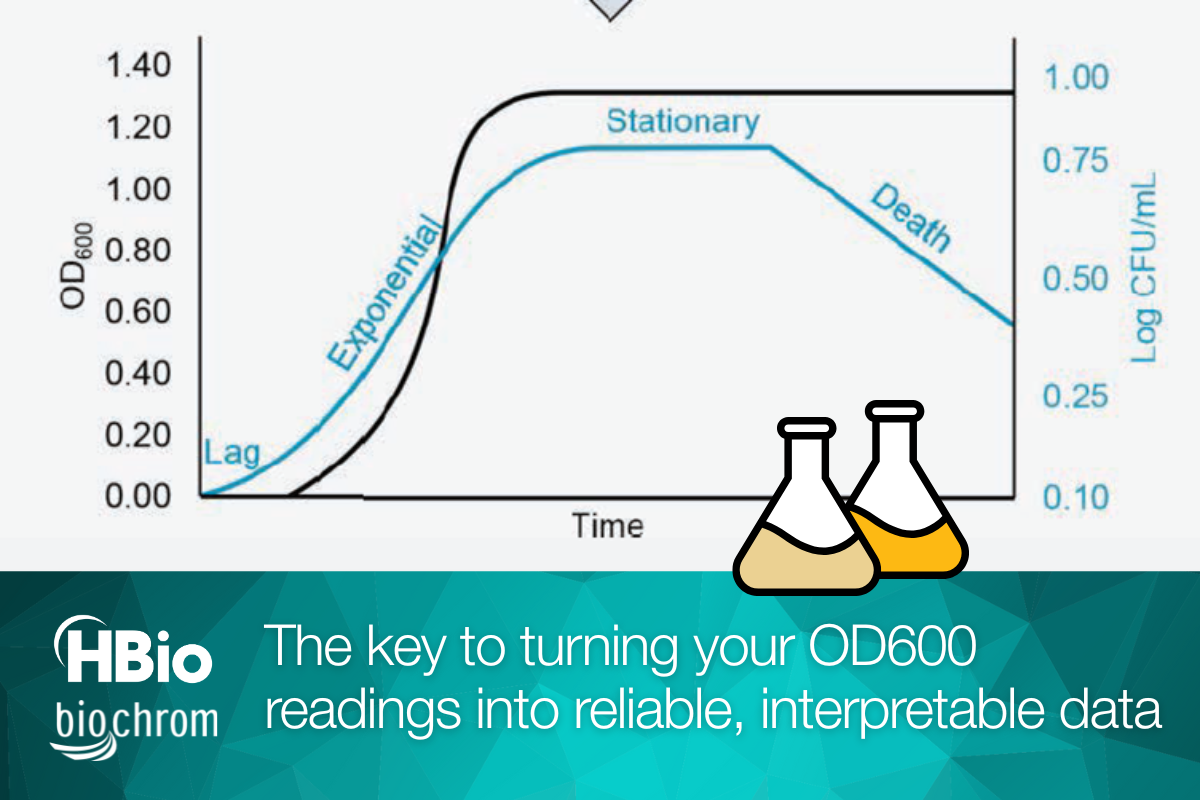
Why Standard Curves Matter in Microbial Growth Measurement
In microbiology, shortcuts often come at the expense of precision. Whether you're culturing E. coli for recombinant protein production, studying environmental microbes or brewing beer, building and using a proper growth curve ensures your results are as robust as your science demands.
Accurately measuring microbial growth is essential for everything from basic biological research to large-scale industrial fermentations. While many scientists rely on optical density (OD) readings at 600 nm (OD600) as a convenient proxy for microbial biomass, the truth is more nuanced. OD600 readings alone can be misleading if not supported by well-constructed standard curves.
What OD600 Really Measures
At 600 nm, we're not actually measuring how much light is absorbed by a microbial culture — we're observing how much is scattered due to turbidity. This scattering depends not just on the number of cells, but also on their shape, size, how much they clump, or even change shape as they go through budding phases in the case of yeast. As such, OD600 is an estimated measurement of biomass, not a direct count of viable cells.
Different instruments, cuvette types, and even vial materials can give dramatically different OD readings for the same sample. This is due to variations in optical geometry such as detector placement, slit size, and sample pathlength. Without standardization, comparing OD600 values across different experiments, labs, or instruments is unreliable.
The Role of Standard Growth Curves
This is where growth curves come in. By correlating OD600 readings with colony-forming units per milliliter (CFU/mL) over time, researchers can construct a standard curve specific to their cell type/s and instrumentation. This allows them to:
- Accurately identify the exponential phase — crucial for timing interventions like induction of protein expression.
- Account for changes — such as switching media, strains, or instruments.
- Correct instrument bias — by calculating a conversion factor between devices.
- Improve reproducibility — across experiments and collaborators.
Creating a reliable standard curve involves taking time-point samples, preparing serial dilutions, plating for CFUs, and measuring OD600 replicates. Though time-consuming, this process lays the groundwork for meaningful, reproducible results.
Practical Tips
- Always use the same vial type and instrument for consistent results.
- Flat faced cuvettes are recommended as they reduce refraction. If you must use test tubes, rotate when measuring OD600 to reduce refractive variability.
- Update your standard curve whenever you change a variable (media, strain, vial, etc.).
- Avoid serial dilutions during CFU plating — pipetting error compounds quickly.
- McFarland standards can be a helpful tool for initial turbidity calibration and as a quick visual check to approximate cell density before more precise measurements.
- Always be aware that microbial cells will settle to the bottom of the vial if left motionless, and this will lead to inconsistencies between readings.
Final Thoughts
In microbiology, shortcuts often come at the expense of precision. Standard growth curves may seem like extra work, but they are the key to turning your OD600 readings into reliable, interpretable data. Whether you're culturing E. coli for recombinant protein production, studying environmental microbes or brewing beer, building and using a proper growth curve ensures your results are as robust as your science demands.
The Biochrom Ultrospec® 30 Cell Density Meter features a unique standard curve functionality that allows the user to generate and save cell- and condition-specific standard curves directly to the device, to be used for future quantification. Standard curves can be generated using absorbance values or McFarland standards. The Ultrospec 30 also features a battery-powered handheld portable design with a small footprint, as well as the ability to export data to a PC via cable or flash drive. Learn more about the Ultrospec 30 here.




